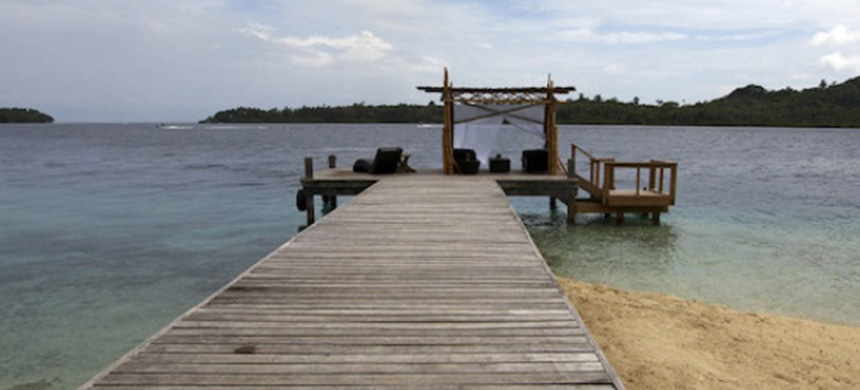Sea-Level Rise Claims Five Islands in Solomons: Study
ENVIRONMENT, 16 May 2016
teleSUR – TRANSCEND Media Service
Five islands have disappeared in the Pacific’s Solomon Islands due to rising sea levels and coastal erosion.

At least 11 islands across the northern Solomon Islands have either totally disappeared over recent decades or are currently experiencing severe erosion, an Australian study shows. (photo: Reuters)
8 May 2016 – A new study published by Australian academics reveals at least five low-lying reef islands in the Solomon Islands have vanished due rising global sea-levels and coastal erosion.
“At least eleven islands across the northern Solomon Islands have either totally disappeared over recent decades or are currently experiencing severe erosion,” a new report published in the journal Environmental Research Letters stated.
The researchers looked at 33 islands using aerial and satellite imagery from 1947 to 2014, combined with historical insight from local knowledge.
“They were not just little sand islands,” lead author of the report, Simon Albert, told AFP.
The new research discovered that rates of shoreline recession were substantially higher in areas exposed to high wave energy, indicating a “synergistic interaction” between sea-level rise and waves, which Albert said could prove useful for future study.
Albert, a senior research fellow at the University of Queensland, said the Solomons Islands are considered a sea-level hotspot because rises there are almost three times higher than the global average.
The most recent findings by a team of climate researchers serves as evidence of the devastating impact of climate change on low lying Pacific countries, the report warns.
“Climate change induced sea-level rise is anticipated to be one of the greatest challenges for humanity over the coming century,” According to the report.
“Understanding the extent and rate of recent shoreline changes on the islands of the western Pacific is an important step towards assisting these vulnerable communities to adapt to the unprecedented rate of sea-level rise and associated climate changes (e.g. winds and waves) expected over the coming century.”
Go to Original – telesurtv.net
DISCLAIMER: The statements, views and opinions expressed in pieces republished here are solely those of the authors and do not necessarily represent those of TMS. In accordance with title 17 U.S.C. section 107, this material is distributed without profit to those who have expressed a prior interest in receiving the included information for research and educational purposes. TMS has no affiliation whatsoever with the originator of this article nor is TMS endorsed or sponsored by the originator. “GO TO ORIGINAL” links are provided as a convenience to our readers and allow for verification of authenticity. However, as originating pages are often updated by their originating host sites, the versions posted may not match the versions our readers view when clicking the “GO TO ORIGINAL” links. This site contains copyrighted material the use of which has not always been specifically authorized by the copyright owner. We are making such material available in our efforts to advance understanding of environmental, political, human rights, economic, democracy, scientific, and social justice issues, etc. We believe this constitutes a ‘fair use’ of any such copyrighted material as provided for in section 107 of the US Copyright Law. In accordance with Title 17 U.S.C. Section 107, the material on this site is distributed without profit to those who have expressed a prior interest in receiving the included information for research and educational purposes. For more information go to: http://www.law.cornell.edu/uscode/17/107.shtml. If you wish to use copyrighted material from this site for purposes of your own that go beyond ‘fair use’, you must obtain permission from the copyright owner.